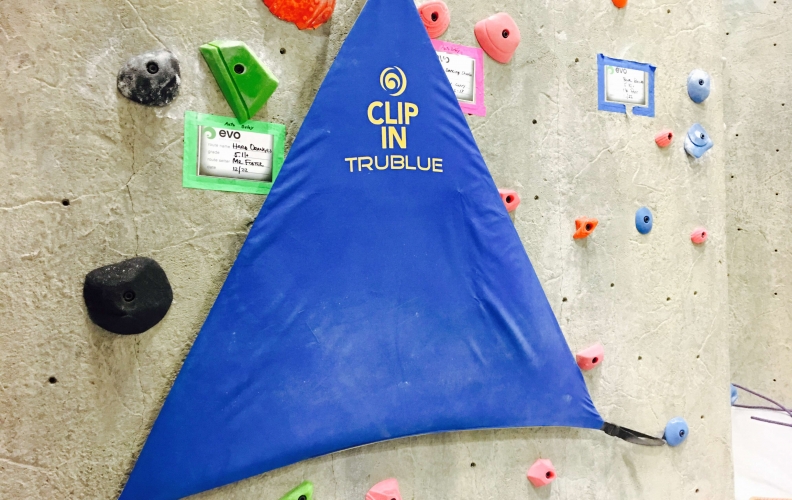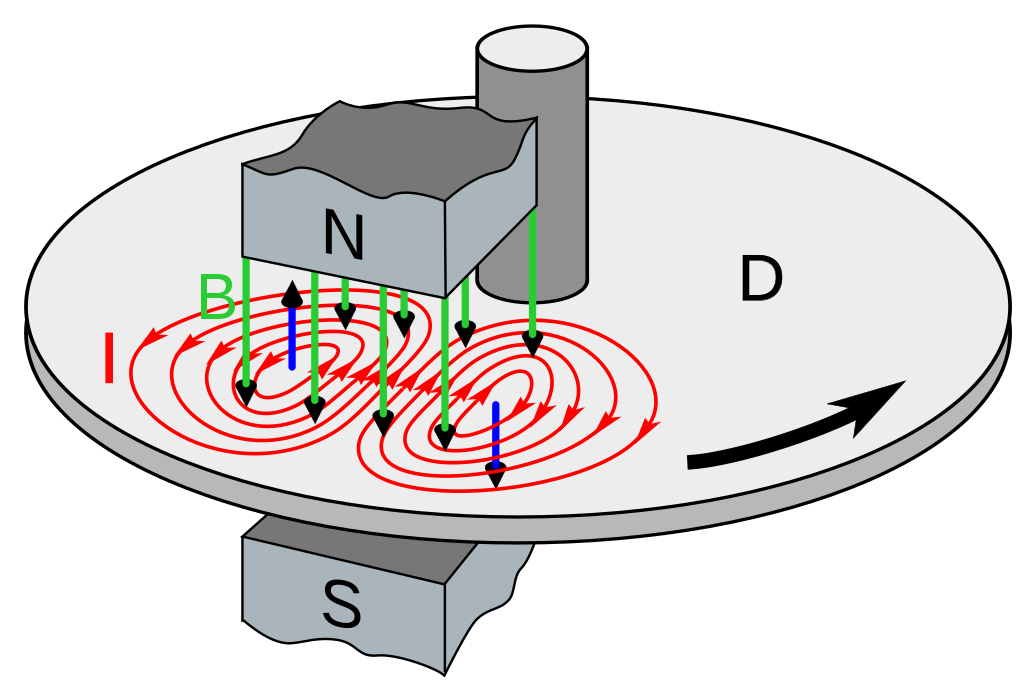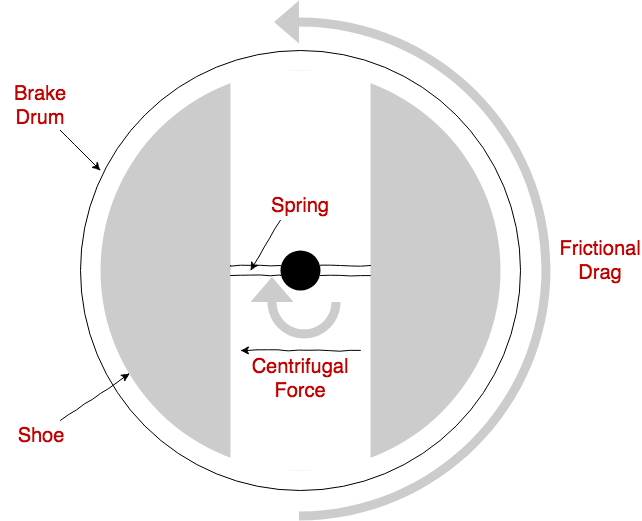Have you ever gone to the gym alone, hoping to find a friend to climb with, but to no avail?
Perhaps you’re not in the mood to boulder, or you had your mind set on running laps up and the down the wall for training.
In the past, you would have been plum out of luck if you couldn’t find someone to be your belay slave. Nowadays, many climbing gyms have incorporated a useful device to help individuals climb without a belay partner - the auto belay.
Clip the free locking carabiner to your belay loop. Check the crab is locked and then unclip the other carabiner from the ground anchor, now climb. Just remember, you're on your own and betting on the proper functioning of the auto belay, so be alert to any odd or changing performance in the device. When you're done, always clip to the anchor first, then unclip from your harness.
How Do Auto Belays Work?
An automatic belay device (AKA auto belay) takes up slack as you climb, thereby negating the need for a belayer on the ground. When the climber reaches the top, or if they fall, the device automatically catches the climber and slowly lowers them to the ground.
Sounds pretty simple right?
But how does it take up the slack, you ask? And why won’t it drop me if I fall?
Let’s look into the mechanics of the device to get a better understanding of how they work and why auto belays are a far safer alternative to climbing alone than free soloing.
How are Auto Belays constructed
An auto belay device is comprised of two main parts - the internal mechanism and the outer shell.
The straightforward outer shell consists of a metal case for durability and an installation handle that anchors the device to the wall.
The inner components are also relatively simple.
Inside the device you can find a long, nylon lanyard coiled tightly around a spring-loaded center spool. This lanyard is what you clip into, instead of tying into a traditional climbing rope.
Most auto belays use the same mechanism for ascension, but the mode of descent varies among different types of automatic belay devices.
To ascend, the lanyard is simply wound into the device by a retraction spring as you climb. However, there are two types of braking systems utilized for a controlled descent: magnetic and friction based.
Magnetic Auto Belay Devices
One auto belay design relies on magnets for braking purposes.
Think of the braking force you felt if you’ve ever ridden a roller coaster, train, or elevator - these all use the same magnetic force for deceleration.
In terms of the auto belay, two large magnets inside the device are attached to a rotor.
When the climber descends, the force of the slack being pulled out of the device spins the rotor. This, in turn, sends the magnets outwards from the center of rotation.
The outward motion pushes the magnets closer to a metal plate that curves around the perimeter of the rotor.
As the magnets get closer to the metal plate, an electromagnetic force is induced, which slows down the rate of descent to a safe and comfortable speed.
The TRUBLUE auto belay system uses magnetic braking and has a minimum/maximum weight of 22 and 330 lbs respectively.
It is possible to out-climb a TRUBLUE auto belay due to the lag caused by the magnets trying to recoil the slack, but they are one of the most popular auto belay systems on the market today.
Friction Based (Centrifugal Force) Auto Belay Devices
Friction braking systems like the one used in the Perfect Descent auto belay rely on centrifugal force to slow the climber as they descend.
Centrifugal force is “a type of inertia that creates an outward push when an object spins in a circle.”
Imagine how your laundry is pushed to the outside walls of the machine during spin cycle - the washing machine uses centrifugal force to make this happen.
A drum brake (similar to a parking brake in a car) is located inside the device.
The lanyard wraps around the drum brake and uses centrifugal force to slow the climber as they descend.
Basically, when the center spinning wheel (the drum brake) is engaged in the opposite direction during a fall, your weight creates centrifugal force.
This force pushes internal brake pads out against the braking drum, thereby slowing your descent to a safe and controlled speed.
The speed of descent on the Perfect Descent auto belay system depends on the weight of the climber - the heavier you are, the faster you will descend.
This type of auto belay has operating minimums and maximums of 25 and 310 lbs, respectively.
How to Use an Auto Belays

Human error is the biggest liability when it comes to using auto belays (this is also true for partner belays and climbing in general).
You must also ensure that you clip to your harness before uncliping the lanyard from the ground anchor.
It’s a common sight to see an autobelay fully retracted because someone fumbled the clip to their harness and had already unclipped from the anchor.
So, to use an auto belay, the first thing you do is attach yourself to the device by clipping the locking ‘biner at the end of the nylon lanyard into the belay loop on your harness. Make sure the carabiner is locked and securely attached to the loop before unclipping from the ground anchor.
Then unclip from the ground anchor and simply begin climbing the route of your choice.
Whilst these devices should be being checked and maintained, there’s no harm in doing a low level test fall. Remember, it’s just you and the auto belay, so be extra vigilant.
Climb until you’ve reached the top or your own personal limit, then stop. You can now choose to downclimb the route to practice your footwork, or trust the auto belay to catch your weight as you descend.
The first fall on an auto belay can be a bit daunting, but trust me - it will catch you.
You just have to be willing to let go of the wall with both hands and jump lightly away from the wall, sticking your feet out as though you were sitting in a chair with your legs extended.
The auto belay does all the work from there! Don’t fear; climb on and descend with care!
Whilst it shouldn’t happen, if you do notice any odd behaviour in the device, changes in decent speed, weird noises, don’t hesitate to ask one of the staff members to check it out.
Like any bit of climbing gear, it’s your responsibility to make sure you’re happy with everything and that it’s all in good working order.
Why to Use an Auto Belays
The flexibility associated with auto belays makes them a popular alternative to solo bouldering and unbeatable tools for training.
With an auto belay, you can perform laps up and down the wall over and over again, presuming no one is waiting for a turn. Laps will improve your endurance and overall technique, especially when you’re feeling pumped.
You can also downclimb on an auto belay, which will help to refine your footwork.
Downclimbing is an excellent skill to have as a climber, especially if you plan on getting on traditional routes without a lot of beta in the future where you may need to retreat by downclimbing.
Climbing slowly is another great reason to use an auto belay.
When you slow down your speed on the wall, it allows you to focus more attention on your weaknesses and work to improve them as you go.
You can move as slowly as possible, gripping each hold for a few moments in order to zero in on your technique and move your feet in the most efficient way possible.
Climbing an easy route on an auto belay is also a great way to warm up before getting on bigger projects in the gym.
Furthermore, auto belays allow climbers new to leading to mock lead before ever tying in to the sharp end for real.
You can practice clipping by tying into a lead rope and the auto belay. Clip your lead rope as you climb with the auto belay acting as a backup lifeline in case you fall unexpectedly.
Maximizing solo training time while excusing your partner from the drudgery of belay duties makes using an auto belay an excellent choice for anyone trying to up their training regimen or get into lead climbing without the fear of decking.
Auto belays designed specifically for rock climbing revolutionized indoor climbing many decades ago, and have only become safer and more efficient over the years.
If you’re looking to climb on your own, there’s no better way than with an auto belay!


